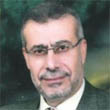Health Effects of Occupational Noise Exposure In The Range (90 - 110) Db(A) Especially on Blood Oxygen Saturation of Workers In Selected Industrial Plants
Thu, 2015-08-27 10:27 — Prof. Issam Rashid Ashqer
Journal Title, Volume, Page:
Environmental Science, An Indian Journal, Volume 8 Issue 11, ISSN : 0974-7451
Year of Publication:
2013
Preferred Abstract (Original):
This study shed the light on the effects of occupational noise level on some of the dependent variables, such as: blood oxygen saturation (SPO2%), pulse rate (P.R), arterial blood pressure (systolic (SBP) and diastolic (DBP)), and hearing threshold levels (HTL). 115 workers of both genders (96 male, 19 female), with mean age 35.22 yr, and the mean duration of employment 6.99 yr, were randomly chosen as a sample to fulfill the aim meant. This sample was taken from seven industrial plants of various types in Jenin city. The values of sound pressure levels (SPL) in all studied plants ranged from 82.5 dB(A) to 110.5 dB(A), with mean of (94.34 dB(A)). A number of measurements concerning with blood oxygen saturation, pulse rate, arterial blood pressure (systolic and diastolic), and hearing threshold levels at different frequencies were taken for the selected sample before and after 6 hours exposure to noise. Strong positive correlation (Pearson Correlation Coefficient) with SPL was found for all measured variables. The statistical results for the dependent variables (SPO2%, P.R, SBP, DBP, HTL) showed that Pearson correlation coefficient (R) between sound pressure level and the dependent variables are approximately equal to one, and the Probabilities (P) are < 0.05. This study showed that the health effects of noise depend on the noise level itself, more specifically, workers exposed to noise more than 90 dB(A) have a significant shift of the mean measured values (blood oxygen saturation, pulse rate, arterial blood pressure (systolic and diastolic), and hearing threshold levels), more than workers exposed to noise less than 90 dB(A).

